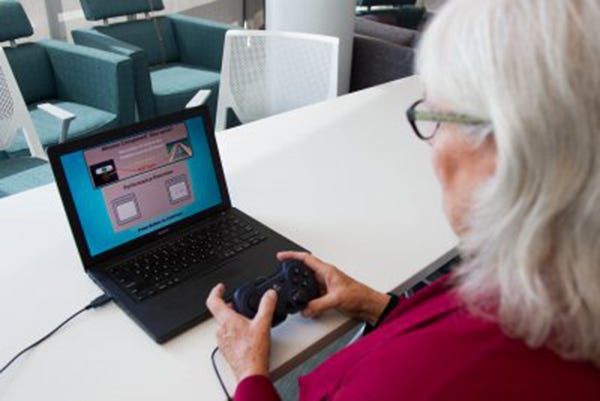Neuroracer keeps elderly people's brains sharp, trains them to multitask again
Scientists and game designers have worked together at UC San Francisco to develop Neuroracer, a multitasking based racing game designer to help elderly people maintain mental elasticity.
A new study published in Nature shows that while people above 65 find it more difficult to coordinate on the various movements it takes to play a video game, just three hours per week can dramatically improve an older person's working memory and multitasking.
The study involved people of various decades playing Neuroracer with its "adaptive difficulty", which means it dynamically increased the game's challenge in response to good play. Like how Okami would make a section easier without your permission if you died too much.
The study's leader, Adam Gazzaley, whose titles are so numerous they require square brackets [MD, PhD, UCSF associate professor of neurology, physiology and psychiatry and director of the Neuroscience Imaging Center] said that adaptive difficulty was key to revitalising the brain.
“Normally, when you get better at something, it gets easier,” however with this game "when you get better, it gets harder”. For this reason the game was more effective at maintaining a person's ability to multitask than a crossword or more traditional video games.
Neuroracer requires its players to stay in the middle of a twisting Wipeout-esque course while responding to button prompts not entirely unlike Quick Time Events. The old women in the video certainly seem pretty into it and after approximately 12 hours play time, their brains were as adept at navigating new challenges as a 20 year old playing the game for the first time.
The game was developed by Akili Interactive Labs, which Gazzaley founded. Sadly you can't actually play the game without being hooked into hooked into a device for electroencephalography.
But you can read all about it in Nature.

